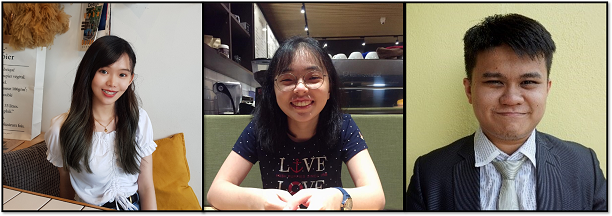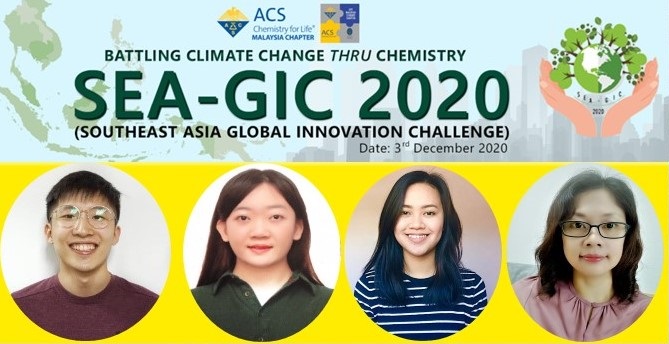KUCHING – Two teams comprising Swinburne’s chemical engineering students have emerged as finalists at the Southeast Asia Global Innovation Challenge (SEA-GIC) 2020 held virtually on 3 December 2020.
The prestigious annual pitching competition organised by the American Chemical Society (ACS) Malaysia Chapter aims to promote innovativeness and creativity among Southeast Asia students by delivering ideas on solving real-world problems.
In collaboration with Universiti Teknologi Petronas (UTP) and ACS UTP, this year’s challenge spheres around the theme ‘Battling Climate Change thru Chemistry’, which involved the showcase of chemistry-related projects in the areas of carbon dioxide utilisation, renewable energy, green chemistry, transportation, and building.
Among the teams representing Swinburne were students Emily Tan Sze Min, Nuralya Alyssa Azureen bt Ismail and Slyvester Chai Yew Wang led by their advisor and senior lecturer Ir. Dr Ngu Lock Hei. Their project entitled ‘CO2 Utilization in Bicarbonate Lime Mortar with Industrial Waste’ which converts the over-emission of industrial waste carbon dioxide to a construction material won them second place.
Speaking on behalf of the team, Chai commented that the competition had been a wonderful platform for disseminating awareness on the state of the environment allowing exchange of various innovative ideas for combating climate change through chemistry.
Dr Ngu added that they believe empowering various stakeholders and the younger generation is crucial in our continuous battle and effort towards a sustainable future for all.

(L-R) Ng, Ong and Dr How.
Meanwhile, final-year undergraduate students Ong Jia Ling and Ng Chi Yan also qualified as a team finalist for their project entitled ‘The Future Paradigm for Hydrogen Production via Catalytic Dry Methane Reforming’.
Supervised by chemical engineering lecturer Dr How Bing Shen, the project evaluates the feasibility of using two novel catalysts in green hydrogen production. Through a dry methane reforming process, it promotes a pathway for cleaner hydrogen production for overall economic and environmental sustainability.
For Ong, the event had provided her the opportunity to communicate with other young researchers while yielding interesting outcomes through the competition’s journey.
“Despite joining SEA-GIC amidst a busy schedule as final-year students, we value the experience it brought and we feel proud of our achievement as young Swinburne researchers,” Ong said.
With 58 participating teams from Malaysia and Indonesia, only 15 teams were selected to compete in the final competition. Finalists of other higher learning institutions were Universiti Sains Malaysia; Universiti Kebangsaan Malaysia; Universiti Teknologi Malaysia; Universiti Malaya; Universiti Teknologi PETRONAS; Universitas Islam Indonesia; University of North Sumatera; Brawijaya University; Universitas ‘Aisyiyah Surakarta; and Halu Oleo University.
For more information about Swinburne, visit its website www.swinburne.edu.my, Facebook page (@swinburnesarawak), Instagram (@swinburnesarawak), Twitter page (@Swinburne_Swk) or YouTube channel (Swinburne Sarawak).


